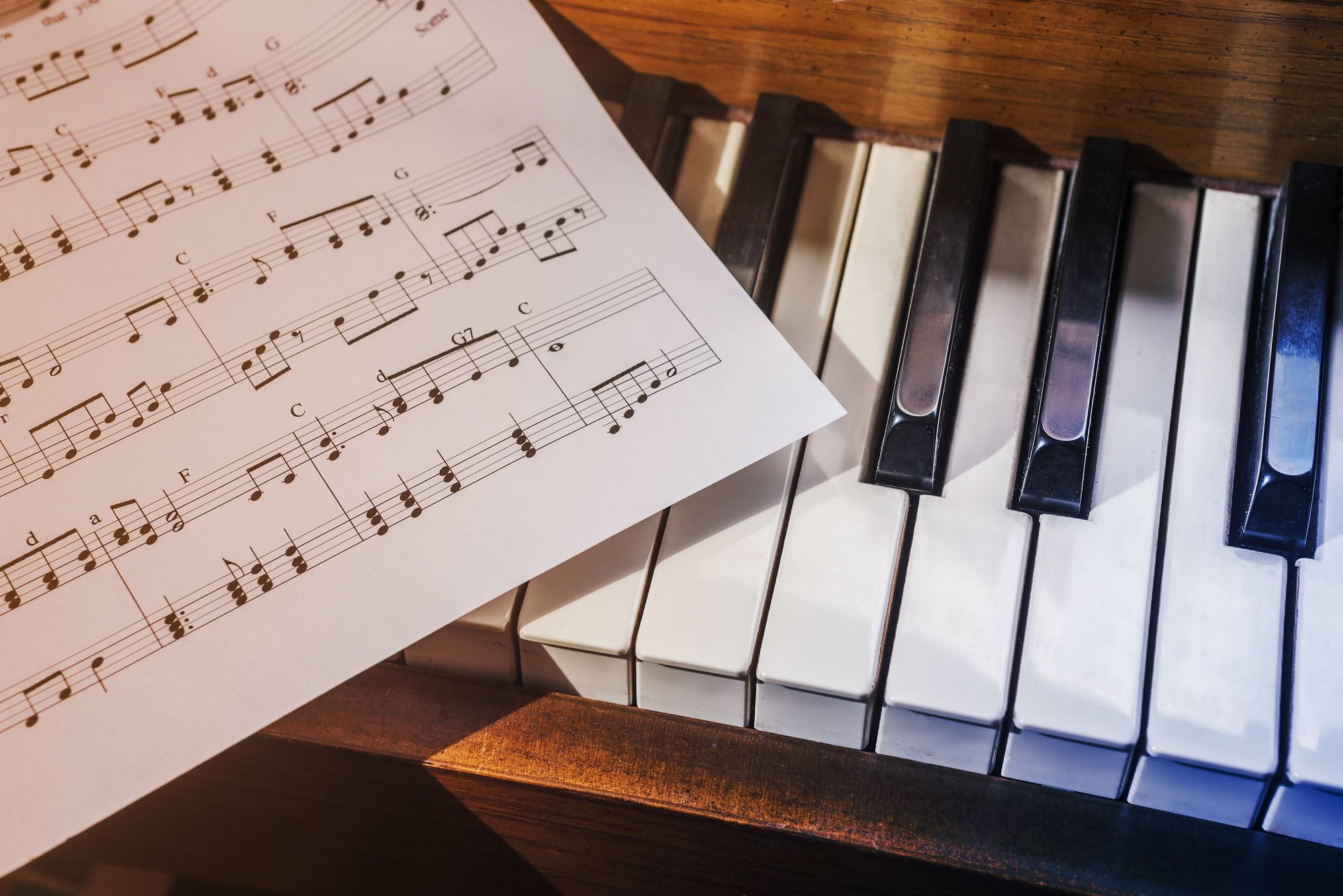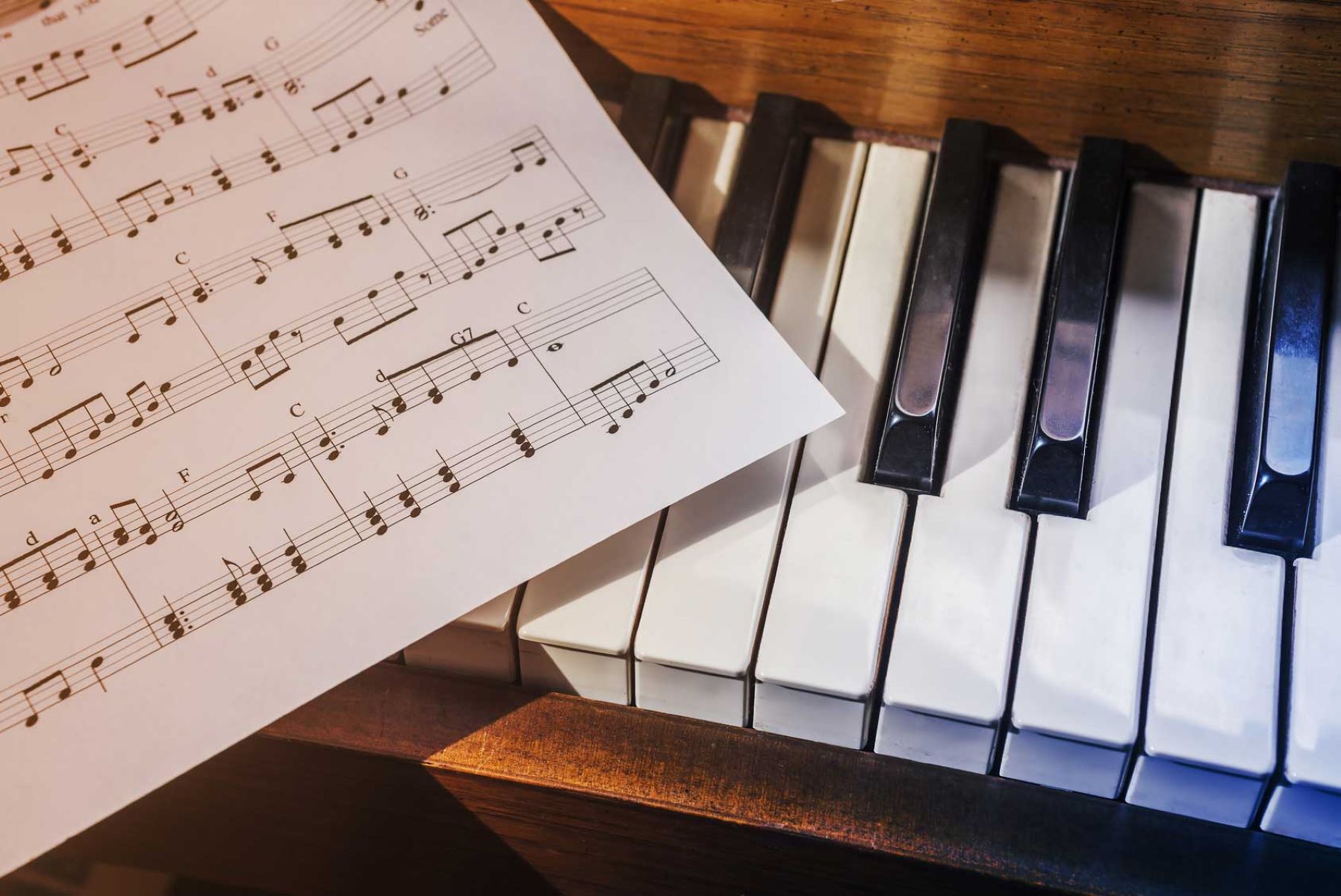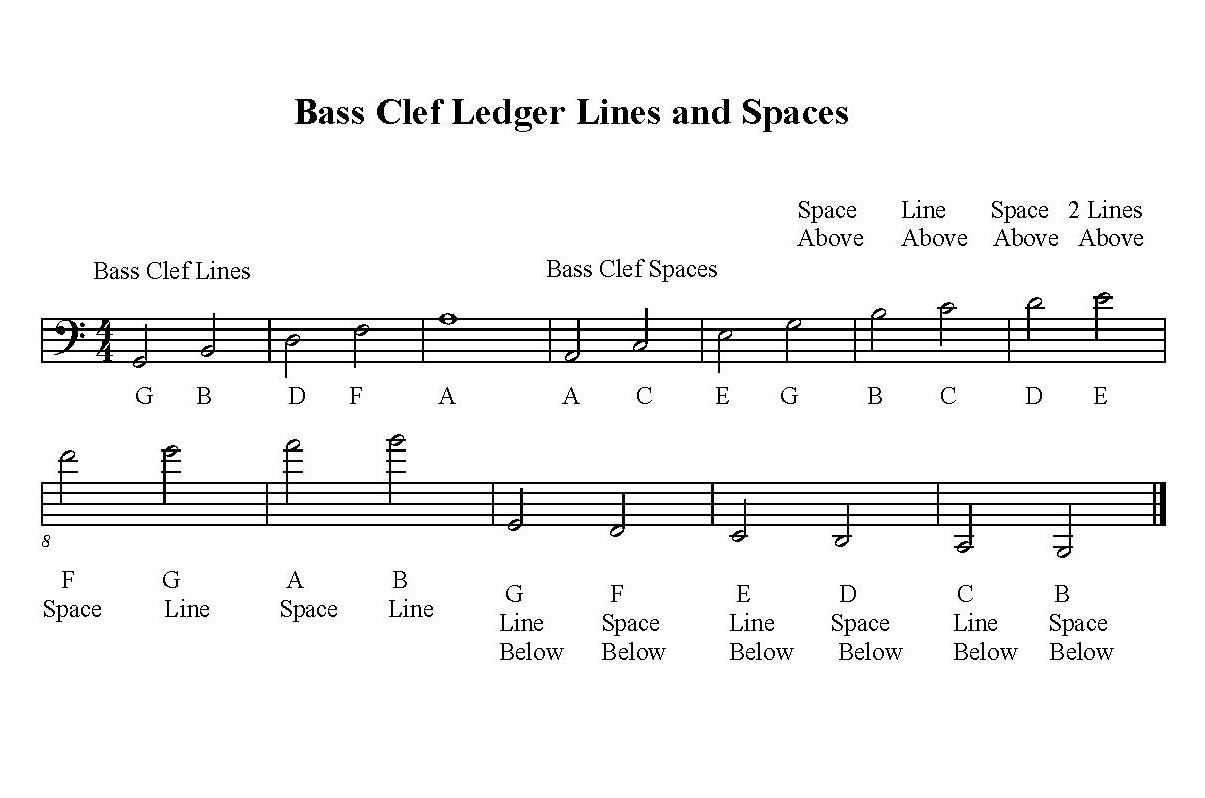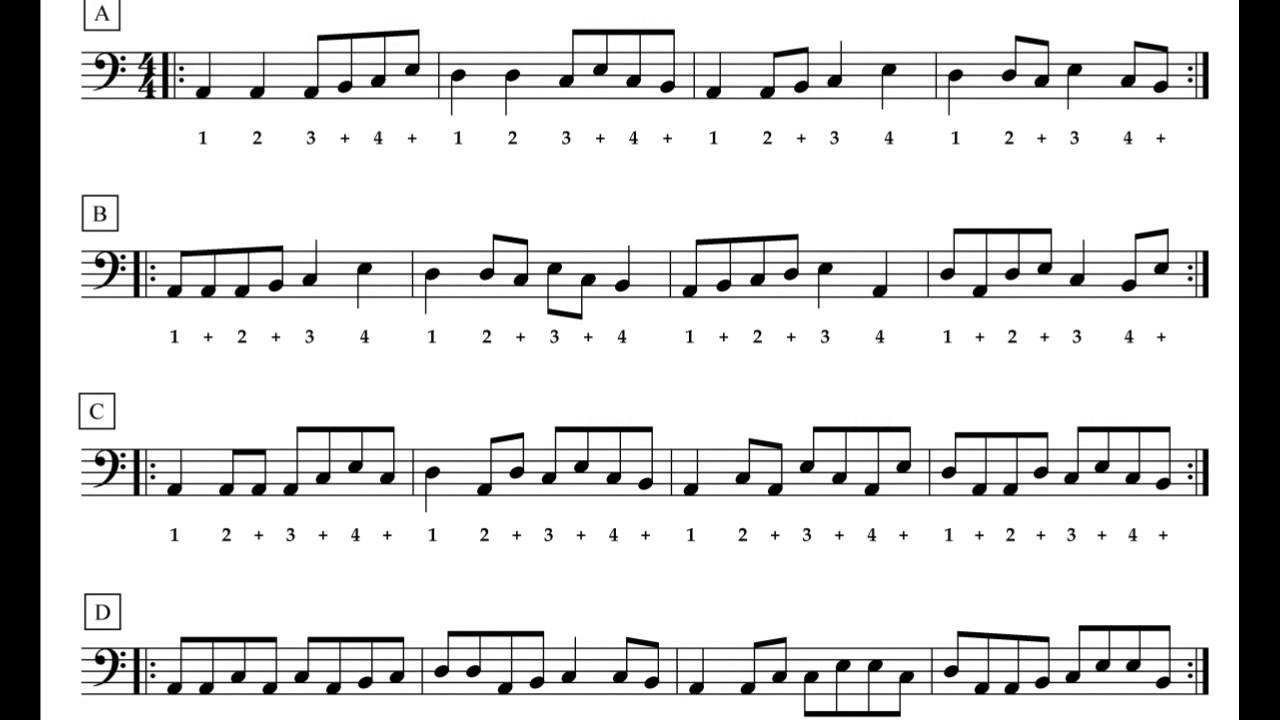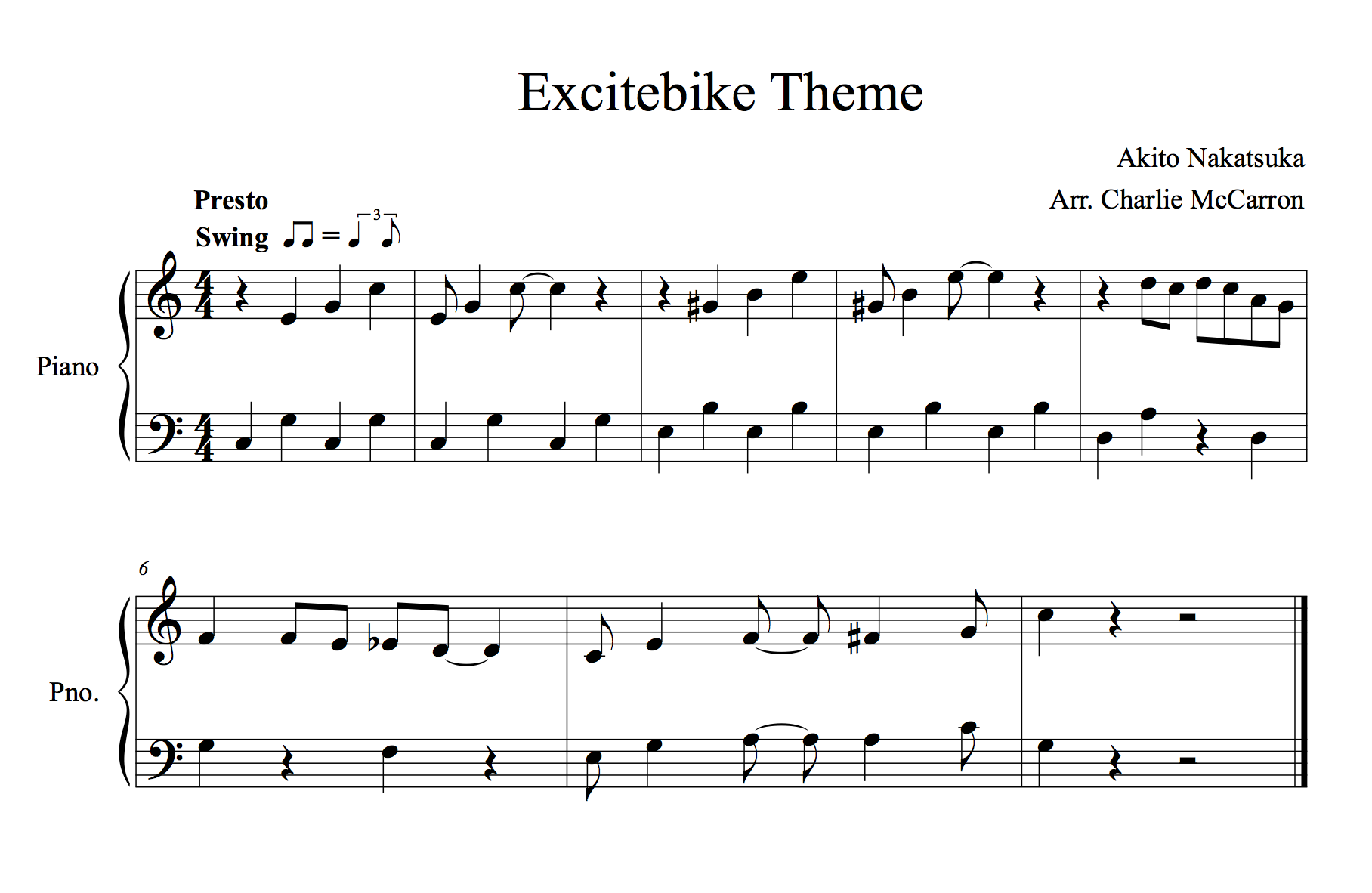Home>Instruments>Piano>How To Read Bass Clef On Piano
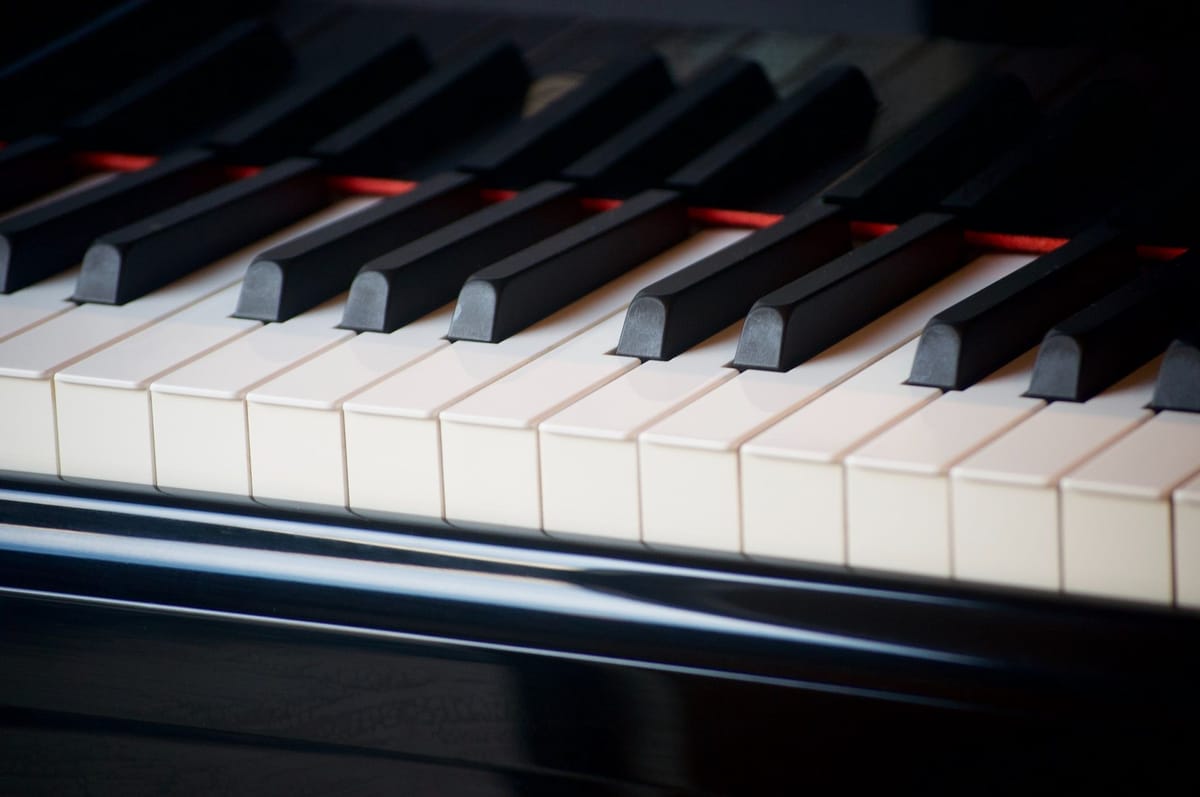

Piano
How To Read Bass Clef On Piano
Published: February 11, 2024
Learn how to read bass clef on piano and improve your music skills. Master the fundamentals of reading bass clef notation with our expert guide.
(Many of the links in this article redirect to a specific reviewed product. Your purchase of these products through affiliate links helps to generate commission for AudioLover.com, at no extra cost. Learn more)
Table of Contents
Introduction
Understanding how to read music notation is an essential skill for any aspiring pianist. While the treble clef is often the first clef that beginner pianists learn, the bass clef is equally important and adds depth and richness to the music. In this article, we will delve into the intricacies of reading the bass clef on the piano, providing valuable insights and practical tips to help you master this fundamental aspect of piano playing.
The bass clef, also known as the F clef, is characterized by its distinctive curly cue and two dots, indicating that the fourth line from the bottom of the staff represents the note F. It is primarily used to notate lower-pitched notes, providing a solid foundation for harmonies and melodies in piano music. Understanding the bass clef opens up a world of musical possibilities, allowing pianists to explore a wider range of notes and expressiveness in their playing.
As we embark on this journey to demystify the bass clef, it's important to approach the learning process with curiosity and a willingness to embrace new challenges. By the end of this article, you will have a solid grasp of how to interpret and play notes in the bass clef, empowering you to tackle a diverse repertoire of piano music with confidence and proficiency.
Whether you're a beginner pianist eager to expand your musical knowledge or a seasoned player looking to refine your skills, mastering the bass clef is a valuable endeavor that will greatly enrich your musical journey. So, let's dive into the world of the bass clef and unravel its secrets, equipping you with the tools and know-how to read and play music with finesse and artistry.
Understanding the Bass Clef
Before delving into the specifics of reading notes in the bass clef, it’s essential to grasp the foundational concepts that underpin this vital component of music notation. The bass clef, indicated by the F clef symbol, is integral to representing lower-pitched notes on the piano staff. Positioned below the treble clef, the bass clef encompasses a range of notes that contribute depth and richness to musical compositions.
One of the key elements of the bass clef is its association with the left hand on the piano. While the right hand typically plays notes notated in the treble clef, the left hand takes on the responsibility of interpreting and playing notes from the bass clef. This division of labor between the hands allows pianists to create harmonious and balanced melodies, with the bass clef providing a solid foundation for the overall musical structure.
It’s important to recognize that the notes represented in the bass clef are spaced and aligned differently compared to those in the treble clef. The positioning of notes in the bass clef corresponds to lower pitches, with each line and space denoting a specific note on the piano keyboard. By familiarizing yourself with the placement of these notes, you’ll develop a keen understanding of how the bass clef translates to the physical act of playing the piano.
Moreover, the bass clef serves as a guide for pianists to navigate the lower register of the piano, enabling them to produce resonant bass tones and create a well-rounded sonic landscape. Whether you’re playing classical sonatas, jazz compositions, or contemporary pieces, the bass clef plays a pivotal role in shaping the overall tonal palette and rhythmic structure of the music.
By comprehending the significance of the bass clef and its alignment with the lower range of the piano, you’ll gain a deeper appreciation for the nuanced interplay between the treble and bass clefs in shaping musical expression. This understanding forms the bedrock for confidently interpreting and playing notes in the bass clef, setting the stage for a fulfilling and enriching piano-playing experience.
Identifying Notes in the Bass Clef
Mastering the ability to identify and interpret notes in the bass clef is a fundamental skill that empowers pianists to navigate the lower registers of the keyboard with precision and confidence. The notes in the bass clef are represented by lines and spaces, each corresponding to a specific pitch on the piano. By familiarizing yourself with these visual cues and their corresponding piano keys, you’ll be well-equipped to read and play music written in the bass clef.
Let’s start by examining the lines of the bass clef staff. From bottom to top, the lines represent the notes G, B, D, F, and A, with the acronym “Good Boys Do Fine Always” serving as a helpful mnemonic device to remember the note names. These notes align with the piano keys, providing a clear roadmap for playing the corresponding pitches with the left hand. Additionally, the spaces between the lines also denote specific notes, namely A, C, E, and G, forming the phrase “All Cows Eat Grass” as a useful aid in recalling the note names.
As you acquaint yourself with these note representations, it’s important to visualize the spatial relationship between the bass clef notes and the corresponding piano keys. This mental mapping fosters a seamless connection between the visual notation on the staff and the physical act of playing the piano, allowing for fluid and expressive performance.
Furthermore, understanding the concept of ledger lines in the bass clef is crucial for interpreting notes that extend beyond the staff. When notes fall below the staff, additional lines are used to indicate lower pitches, ensuring that no musical nuance is lost in the notation. By recognizing the placement of these ledger lines in relation to the staff, pianists can confidently navigate the full range of the bass clef, embracing the rich tonal possibilities it offers.
By internalizing the correlation between the visual representation of notes in the bass clef and their corresponding piano keys, pianists can effectively decode and execute musical passages with fluency and accuracy. This proficiency lays the groundwork for interpreting complex compositions and infusing them with depth and emotion, amplifying the artistry of piano performance.
Tips for Reading Bass Clef on Piano
As you embark on the journey to master the intricacies of reading the bass clef on the piano, several valuable tips can enhance your understanding and proficiency in interpreting and playing notes in this essential musical notation.
- Memorize the Note Names: Familiarize yourself with the note names associated with the lines and spaces of the bass clef staff. Mnemonic devices such as “Good Boys Do Fine Always” for the lines and “All Cows Eat Grass” for the spaces can aid in quickly recalling the note names as you read sheet music.
- Practice Hand Positioning: Develop a comfortable and ergonomic hand positioning for the left hand, which typically plays notes notated in the bass clef. Ensuring proper hand posture and alignment with the keys facilitates fluid and precise execution of bass clef passages.
- Visualize the Keyboard: Mentally connect the notes in the bass clef to their corresponding piano keys. Visualizing the spatial layout of the keyboard in relation to the bass clef notation enhances your ability to translate visual cues into physical movements on the piano.
- Utilize Repetition and Recall: Engage in regular practice sessions focused on identifying and playing notes in the bass clef. Repetition reinforces note recognition and fosters rapid recall, gradually building fluency in reading bass clef notation.
- Study Simple Bass Clef Pieces: Begin with simple musical pieces that predominantly feature notes in the bass clef. This targeted practice allows you to concentrate on interpreting and playing bass clef passages, gradually expanding your repertoire as your proficiency grows.
- Emphasize Musical Context: Consider the harmonic and rhythmic context of the music as you read bass clef notation. Understanding how the bass clef contributes to the overall musical structure enhances your interpretative skills and fosters a deeper connection to the music.
- Seek Guided Instruction: Enlist the guidance of a knowledgeable piano instructor or utilize reputable online resources to receive targeted instruction on reading the bass clef. Personalized feedback and structured learning can expedite your progress and address any challenges you encounter.
By incorporating these tips into your practice regimen and approach to reading the bass clef on the piano, you’ll steadily enhance your proficiency and confidence in interpreting and playing music notated in the bass clef. Embrace the learning process with patience and determination, knowing that each step taken brings you closer to unlocking the expressive potential of the piano through the mastery of the bass clef.
Practice Exercises
Engaging in targeted practice exercises is a pivotal aspect of honing your ability to read and interpret the bass clef on the piano. These exercises are designed to reinforce note recognition, hand coordination, and overall fluency in navigating the lower register of the keyboard. By integrating these practice exercises into your daily routine, you’ll steadily strengthen your proficiency in reading bass clef notation and translating it into expressive piano playing.
Here are several practice exercises tailored to enhance your command of the bass clef:
- Line and Space Note Identification: Create flashcards or utilize online resources that present random notes in the bass clef. Practice identifying the note names and playing the corresponding keys on the piano, reinforcing your ability to quickly associate visual notation with physical execution.
- Sequential Note Progressions: Select simple melodies or scale patterns notated in the bass clef. Gradually play through these sequences, focusing on smooth transitions between notes and maintaining consistent hand positioning to develop dexterity and fluidity in bass clef passages.
- Chordal Accompaniment: Explore chord progressions written in the bass clef and accompany them with the appropriate chord voicings on the piano. This exercise enhances your understanding of harmonic structures and strengthens your ability to interpret bass clef notation within the context of ensemble playing.
- Sight-Reading Etudes: Incorporate sight-reading etudes specifically composed for the bass clef into your practice routine. These musical pieces offer diverse challenges and nuances, allowing you to continually expand your repertoire and adapt to varying musical styles and complexities.
- Rhythmic Pattern Practice: Focus on reading and playing bass clef passages with varied rhythmic patterns. By mastering rhythmic intricacies in the bass clef, you’ll develop a keen sense of timing and articulation, elevating the expressiveness of your piano performance.
As you engage with these practice exercises, maintain a deliberate and focused approach, paying attention to precision, dynamics, and musical expression. Consistent and purposeful practice not only enhances your technical prowess but also cultivates a deep appreciation for the artistry inherent in reading and playing the bass clef on the piano.
Conclusion
Congratulations on embarking on the enriching journey of understanding and mastering the bass clef on the piano. By delving into the intricacies of bass clef notation and engaging with targeted practice, you’ve taken significant strides toward enhancing your musical proficiency and unlocking new dimensions of expressive piano playing.
As you reflect on the insights gleaned from this exploration, it’s evident that the bass clef serves as a foundational pillar in shaping the harmonic and melodic landscape of piano music. Its distinct notation provides a roadmap for navigating the lower registers of the keyboard, offering a wealth of tonal possibilities and contributing to the depth and richness of musical compositions.
Through diligent study and practice, you’ve familiarized yourself with the note names, spatial relationships, and interpretative nuances inherent in the bass clef. By internalizing these elements, you’ve cultivated a heightened awareness of how the bass clef aligns with the physical act of playing the piano, facilitating seamless translation of visual notation into captivating musical performance.
Furthermore, the practice exercises tailored to reinforce bass clef proficiency have equipped you with the tools to continually refine your skills and expand your musical horizons. By integrating these exercises into your daily practice regimen, you’ll nurture a strong foundation for confidently interpreting and playing bass clef passages with fluency, precision, and artistry.
As you continue your musical odyssey, remember that patience, perseverance, and a spirit of curiosity are your steadfast companions. Embrace the challenges and triumphs that accompany the pursuit of mastering the bass clef, knowing that each step forward brings you closer to realizing your full potential as a pianist.
In closing, the knowledge and expertise you’ve gained in reading the bass clef on the piano will undoubtedly enrich your musical endeavors, whether you’re exploring classical masterpieces, jazz standards, or contemporary compositions. Embrace the beauty and depth of the bass clef, allowing its resonance to infuse your piano playing with nuance, emotion, and boundless creativity.
May the journey ahead be filled with discovery, growth, and the joy of bringing music to life through the mastery of the bass clef on the piano.

